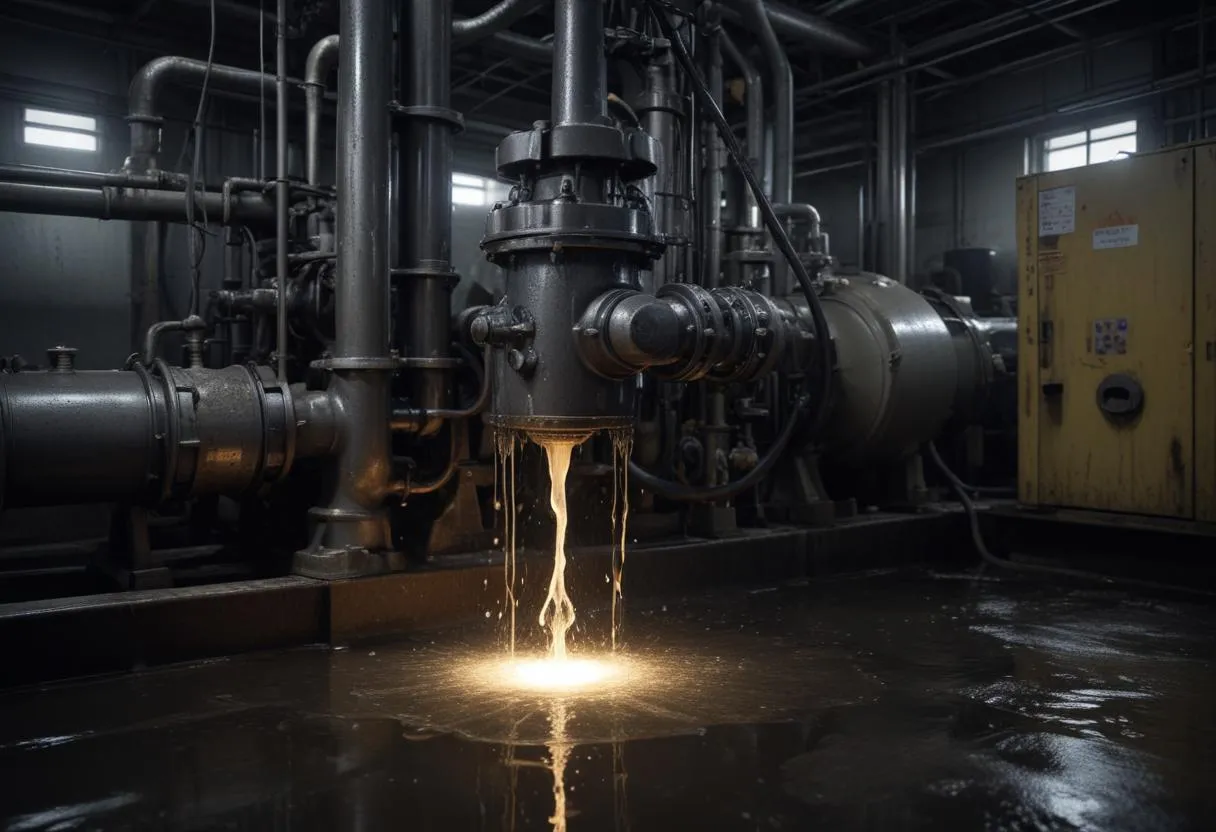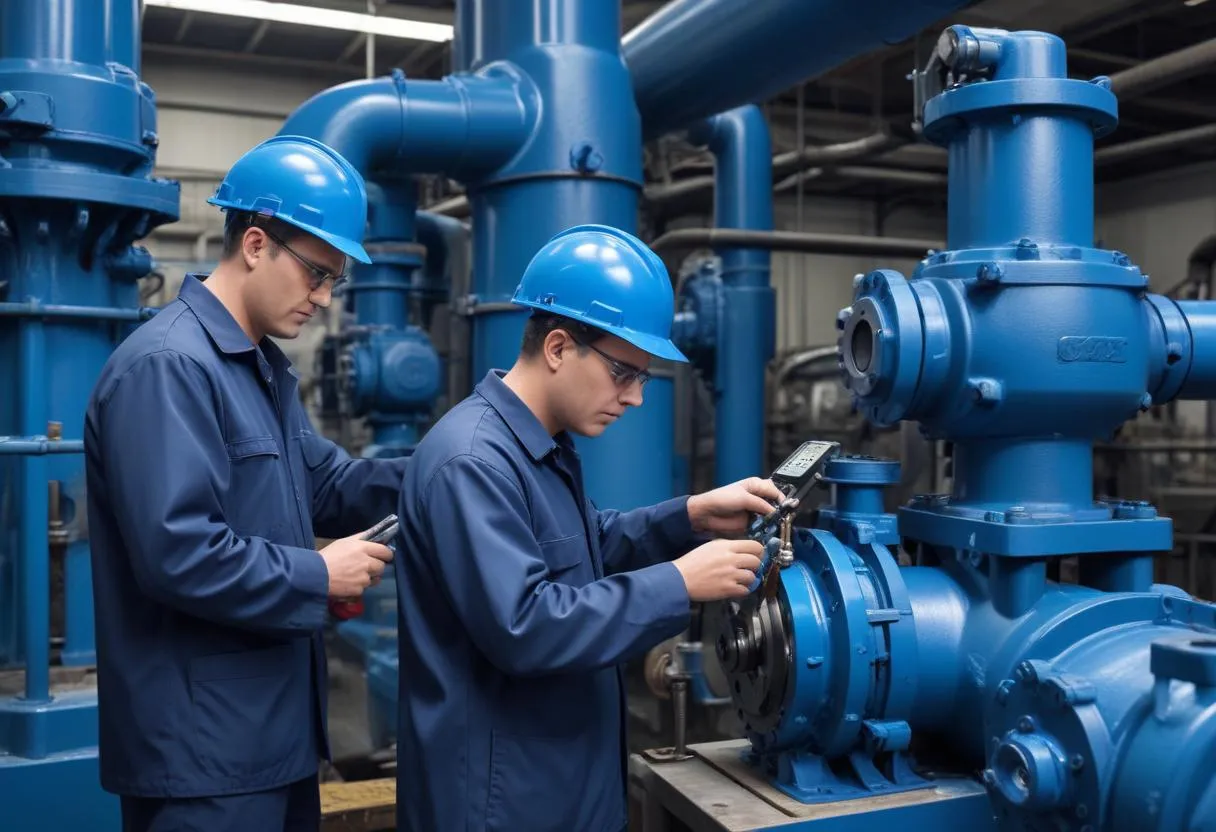 When attempting to diagnose a pump, recognizing early signs of failure is crucial. These symptoms can vary widely depending on the type of pump, but some common indicators should prompt further inspection.
When attempting to diagnose a pump, recognizing early signs of failure is crucial. These symptoms can vary widely depending on the type of pump, but some common indicators should prompt further inspection.
Unusual Noise: Healthy pumps run relatively quietly. If you notice grinding, squealing, or banging noises, it often indicates mechanical issues such as bearing failure or impeller damage. These sounds may suggest that components are wearing out prematurely and may fail soon without intervention.
Decreased Performance: A drop in pump performance, such as reduced flow rate or pressure, is a telltale sign of problems. This can stem from a clogged filter, worn impeller, or other obstructive issues limiting the pump’s effectiveness.
Excessive Vibration: Abnormal vibrations are red flags. They usually imply misalignment, imbalance, or looseness in the pump assembly. Continuous vibrations can hasten wear and tear on various parts, leading to additional damage if not corrected.
Overheating: Pumps that run hotter than their standard operating temperature can be experiencing issues like overload, inadequate lubrication, or poor cooling. Overheating can cause severe damage, especially to seals and bearings, reducing the lifespan of the pump.
Leakage: Any visible leakage, especially around the pump seals or casing, must be addressed. Leakage can result from seal wear, gasket failure, or casing cracks, and can significantly affect the efficiency and safety of pump operation.
Power Consumption: An increase in power use can indicate that a pump is working harder than usual to maintain performance. This can be due to internal issues like blockages or external factors like a change in the fluid’s viscosity.
Below is a table summarizing the common symptoms and their likely causes:
| Symptom | Possible Causes |
|---|---|
| Unusual Noise | Bearing failure, impeller damage |
| Decreased Performance | Clogged filter, worn impeller, leakage |
| Excessive Vibration | Misalignment, imbalance, looseness |
| Overheating | Overload, poor lubrication, inadequate cooling |
| Leakage | Seal wear, gasket failure, casing cracks |
| Power Consumption | Internal blockages, change in fluid viscosity |
Tracking and diagnosing these symptoms early is the key to maintaining pump performance and lifespan, preventing costly downtime and repairs.
Troubleshooting techniques for common issues
When troubleshooting common pump issues, it’s essential to follow a systematic approach to identify the root cause of the problem. Here’s a detailed guide to tackling some of the most frequent challenges:
1. Unusual Noise: Begin by inspecting the pump for any visible signs of wear or damage. Check for loose components such as bearings, couplings, or impellers. Use a stethoscope to pinpoint the source of the noise. If it’s bearing-related, consider replacing the bearings. If the noise is coming from the impeller, ensure it isn’t damaged or obstructed.
2. Decreased Performance: To address a reduction in flow or pressure, start by checking the suction line for blockages or leaks. Verify that the filters are clean and free from debris. Evaluate the impeller for wear and replace if necessary. Also, ensure the pump is properly primed; improper priming can lead to performance issues.
3. Excessive Vibration: Check for misalignment between the pump and the motor or improper mounting. Use a laser alignment tool to correct any alignment issues. Additionally, inspect the mounting base and bolts for stability and tighten as needed.
4. Overheating: Ensure that the cooling system (if applicable) is functioning correctly. Check for and clear any blockages in the cooling passages. Verify that the pump is not operating beyond its designed capacity, as overloading the pump can lead to overheating. Regularly check and maintain the lubrication to prevent friction-related heat.
5. Leakage: Inspect seals and gaskets for wear or damage and replace them if necessary. Also, check for cracks in the pump casing. For seal replacements, ensure proper installation and choose the correct type of seal based on the pump’s application and the fluid being pumped.
6. Power Consumption: To resolve increased power usage, start with a motor efficiency test. Check the voltage and current to ensure they are within normal operating ranges. Inspect the impeller and the internal pump chamber for blockages or debris, which could cause the pump to work harder.
Use the following table as a quick reference guide to troubleshoot and address common pump issues:
| Issue | Troubleshooting Step |
|---|---|
| Unusual Noise | Inspect and replace bearings or damaged impeller |
| Decreased Performance | Check for blockages, ensure proper priming, replace worn impeller |
| Excessive Vibration | Correct misalignment, tighten loose components |
| Overheating | Inspect cooling system, avoid overloading, maintain lubrication |
| Leakage | Replace worn seals/gaskets, inspect for casing damage |
| Power Consumption | Perform motor efficiency test, remove internal blockages |
By following these steps and utilizing the table as a quick guide, you can effectively diagnose and remedy common pump issues, ensuring optimal performance and longevity of your equipment.
Preventative maintenance strategies
 Proactive and regular maintenance of pumps is crucial to prolong their life and enhance their efficiency. Here are some essential preventative maintenance strategies to help avoid common pump problems and minimize downtime:
Proactive and regular maintenance of pumps is crucial to prolong their life and enhance their efficiency. Here are some essential preventative maintenance strategies to help avoid common pump problems and minimize downtime:
Regular Inspections: Regular visual and auditory inspections should be conducted to catch signs of unusual operation early. Check for leaks, listen for any abnormal noises, and observe vibration levels. These inspections help identify issues before they cause significant damage or require costly repairs.
Lubrication: Following the manufacturer’s guidelines for lubrication is fundamental. Depending on the pump type, the lubrication needs may vary. Ensure you use the correct type and amount of lubricant and apply it at the correct intervals.
Cleanliness: Keeping a pump and its components clean is essential for optimal performance. Dirt, debris, or corrosion can lead to inefficiency and eventual breakdown. Regular cleaning of the intake and discharge areas, as well as the surrounding environment, is necessary.
Routine Component Checks: Rotate checks on internal components such as bearings, seals, gaskets, and impellers. Wear and tear on these parts can lead to significant damage. Replace any worn or damaged components before they cause malfunction or affect the pump’s performance.
Vibration Monitoring: Implement vibration analysis equipment to monitor pump vibration levels in real time. Excessive vibration can be an indication of misalignment, imbalance, or mechanical failure. Early detection can prevent significant damage to pump components.
Alignment Checks: Ensure that the pump and its motor are correctly aligned. Misalignment can cause excessive wear and tear, leading to a reduction in pump efficiency and eventual breakdown.
Pressure and Flow Monitoring: Regularly monitor pressure gauges and flow meters to ensure that the pump is operating within its designed parameters. Deviations from expected values can indicate potential problems that require attention.
Here’s a checklist that can be integrated into a routine maintenance schedule:
| Component | Action | Frequency |
|---|---|---|
| Bearings | Inspect, lubricate | Monthly |
| Seals | Inspect, replace if necessary | Every 3 months |
| Impeller | Inspect for wear and tear | Annually |
| Gaskets | Check for leaks, replace as needed | Every 6 months |
| Lubricant | Check level and quality, replenish | According to manufacturer’s guidance |
By integrating these preventative maintenance strategies, you can maintain the reliability and efficiency of your pumps. This approach not only helps in early problem detection but also extends the operational lifespan of the equipment, ensuring it performs optimally for years.